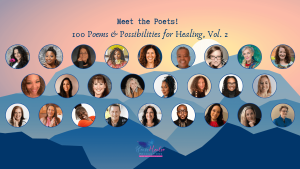I picked up a new book about anatomy based on a recommendation from someone I had taken a class with last year. The book is called “What The Foot?” by Gary Ward – find it on Amazon, and him at www.anatomyinmotion.co.uk 
I was drawn to the title, mostly because I have been practicing a barefoot sport for the last eight years, but secondly because I have, throughout my career, always known that something was wrong with the idea of immobilizing people’s feet with orthotics or rigid shoes. Now listen, all you orthotic and rigid shoe owners out there, I am not going to start this off by telling you what kind of shoes to wear or not wear. This is more about reading a book that I continually found myself nodding my head, and whispering “yes” under my breath to. I want to give you some ideas, maybe radical, about your body, and why you should pay more attention to how you are moving it.
I actually could have stopped reading after Gary’s second chapter – his rants. Finally, someone else who was questioning some basic stuff we were taught in school, and for me that was 20 years ago. Stuff like stretching, strengthening, core stabilization, localized treatments, neutral spine, knee over toe, and finally not working with the body as a whole. So I want to summarize some of these ideas for you, and make you think a little. I want you to question your traditional therapies, if you have had them in the past or are having them now. I want you to ask why a certain idea is “right.” I want you to think about what your amazing body was made for (movement) and try to realize that how we healthcare practitioners first learned about it, was on dead people. Yes, dead people, cadavers. There are a lot of people starting to talk about this, finally. The alive and vital human body, with its fluid crystalline matrix of fascia and consciousness works just a tad bit differently than a cadaver. Ahem.
So here are some things from “What The Foot?” to think about:
1. A muscle can be tight and shortened, and a muscle can be tight and lengthened. Why do you think that a muscle needs to be stretched or strengthened to gain function? And if it does, how do you know which exercise to do? We are used to being given traditional exercises, and some of us are really good at our homework. But I ask you, is it working?
2. Those addicted to grunting at the gym, pay attention. There are two phases to a muscle contraction, shortening (concentric) and lengthening(eccentric). Why would strengthening a muscle only be about one phase? What have you been doing about the eccentric phase? Do you even know what that means?
3. A normal, healthy human body is never still. So why do you put so much effort in to core stabilization? What if you could gain core strength by working on core MOBILITY? Yeah, all you Pilates addicts, chew on that one for a while, I did.
4. What the heck does “neutral spine” mean anyway, and why is it so important? You can’t move your body in a neutral position. It has to be able to move away from and toward it’s center, constantly, during your day. Think about the practicality of neutral spine for a bit.
5. In an effort to protect your knee, hip and ankle joints, making sure to keep your knee over your second toe every time you squat or lunge, you are wrecking your joints. The knee has to move freely with the ankle. I was taught NEVER to let the knee go over/inside or outside the toes. I never liked never statements.
6. Stabilizing a joint limits movement potential, healing potential, and performance. Think orthotics, knee braces, etc.. When we immobilize we quickly create a comfort zone of movement for the joint and limit it’s ability to move out of that comfort zone. Mobility is health. We were made to move.
7. And the last, and my most favorite, the Western medicine habit of breaking the body down into specific parts for treatment. Your body is an amazing system of integrated parts that only in their relationship to each other can function well. The fascial system alone (that three dimensional web of connective tissue that we cut through on our cadavers to get to the muscle) is finally being recognized as one of the keys to health, and is being defined as the substance where consciousness resides. Frickin consciousness, people! We need to pay attention to our whole mind body spirit selves, and in the the process of that awakening awareness, we will tap into a resource for healing we never realized could be so powerful.
It is time to challenge some of the beliefs we grew up with. Time to challenge the things we were taught. We can’t afford the cognitive dissonance any more (yeah, I looked that one up a couple weeks ago). It is time to wake up and move out of our comfort zones. Call me if you need some help. I am ready.
COMMENTS
This is a great post! I am learning, working with my body worker person in California, just what you say: each body part is connected and shouldn’t be viewed independently. We need to be aware that many times, an injury to one part of the body actually has something to do with another part of the body that needs work!







